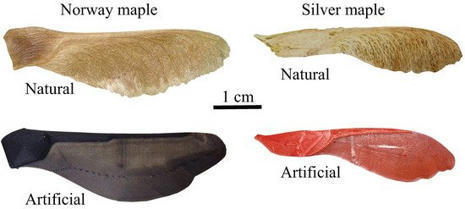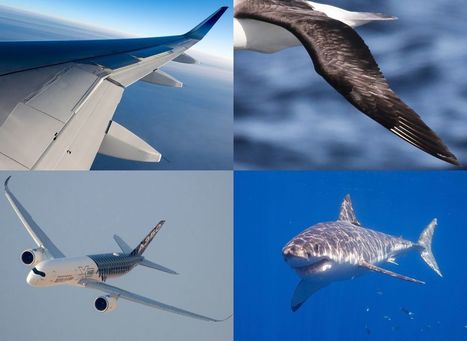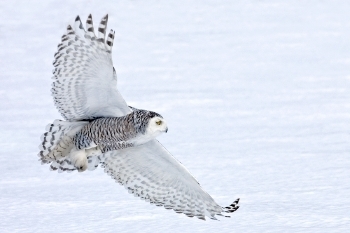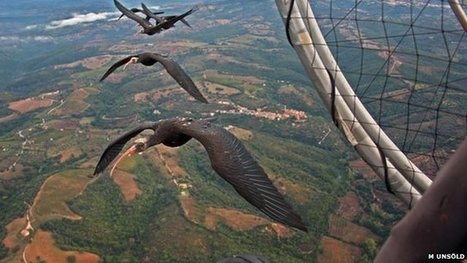"Maple trees (genus Acer) accomplish the task of distributing objects to a wide area by producing seeds, known as samaras, which are carried by the wind as they autorotate and slowly descend to the ground. With the goal of supporting engineering applications, such as gathering environmental data over a broad area, we developed 3D-printed artificial samaras. [...] This study demonstrated a bioinspired design for the dispersed deployment of sensors and provides a better understanding of wind-dispersal of both natural and artificial samaras."

|
Scooped by Miguel Prazeres |





 Your new post is loading...
Your new post is loading...




















